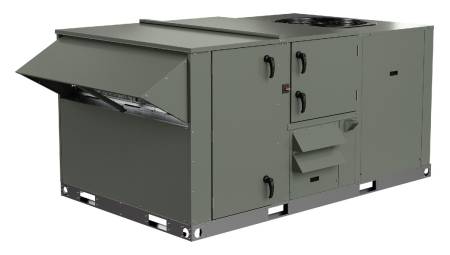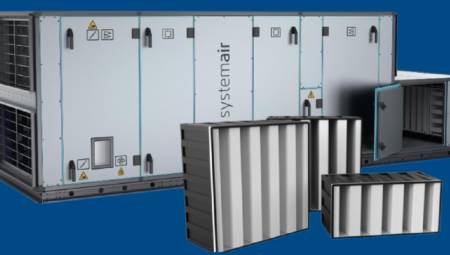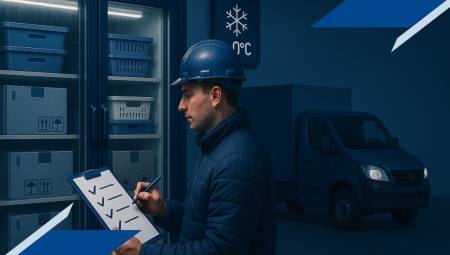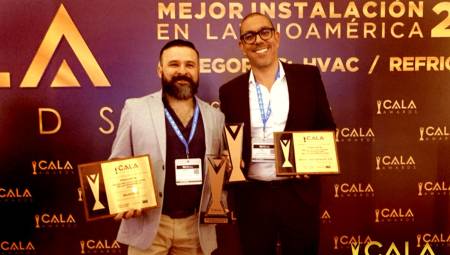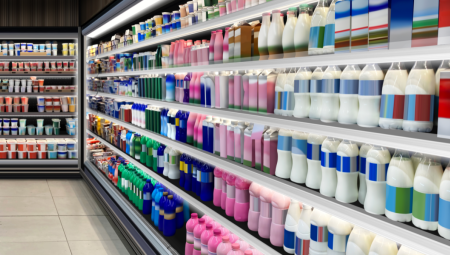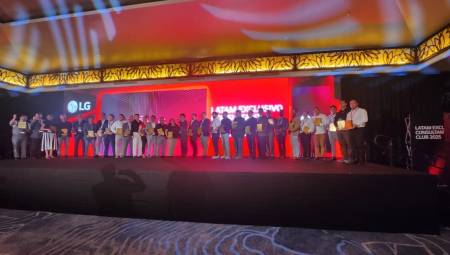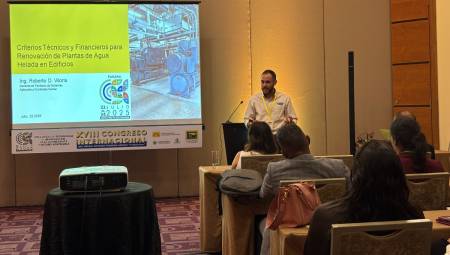 The guest exposes the ways in which architecture currently explores new ways to generate and save energy.
The guest exposes the ways in which architecture currently explores new ways to generate and save energy. By: Ruth Lacomba*
Bioclimatic architecture is one that is designed and built with the least environmental impact, that provides thermal and light comfort and also achieves energy and water savings.
In that same order is the one that is built according to the climate and the soil where it will settle. It is an architecture that responds to the temperature, humidity and winds of the region to achieve great savings in energy.
Other types of architecture
Solar architecture is one that uses photovoltaic cells to produce electrical energy and solar water heater to heat this element whose uses can be extended to bathrooms, kitchens, swimming pools, production and heating processes, etc.
For its part, green architecture is one that respects the trees of the land, that integrates gardens to the interior spaces, that opens to terraces and balconies and that uses the roofs as a roof garden.
Finally, sustainable architecture is one that produces its own electricity through photovoltaic cells or wind turbines, that captures and saves water by recycling it for use in bathrooms and gardens and that is also built with materials from the region that will allow the construction to be integrated into the context. Sustainable architecture is built taking into account processes that must be very careful so that neither the soil nor the water are contaminated.
Likewise, this architecture uses recycled materials and saves the client a lot of money, both in the construction process and in the maintenance of the building during its useful life. The cost of energy and water in a sustainable construction is also very economical because both are captured naturally and what you have to pay for public services is minimal.
Relevant aspects
We must always adapt to the terrain, for example, if you want to heat a house in a cold – temperate area, the ideal would be to find a hill and put the north wall against it and leave the south for windows and greenhouse. The garden with sun to the south will always allow us to grow trees and plants.
The sun gives us energy, comfort, helps plants grow and also gives us spectacular sunsets. That is why it is convenient to leave the garden to the south or east or west depending on whether we are projecting in Huatulco or Veracruz, for the Mexican case.
Currently certain companies such as Bodega Aurrerá and Green Corner are using photovoltaic cells to electrify their companies. In the case of Aurrerá, the Aguascalientes Winery is the one that has photovoltaic cells on its roofs and saves with this electrical energy, since it has a contract with the CFE (Federal Electricity Commission) that allows it to produce its own electrical energy. The result has been so good that it plans to replicate the initiative in all its wineries.
Green Corner, a company that sells organic fruits and vegetables as well as other groceries, also has photovoltaic cells to produce electricity in its store and restaurant located in Miguel Ángel de Quevedo, Coyoacán, Mexico City.
Since last year we can produce our own electricity through a contract with the CFE that allows us to sell electricity to the CFE during the day, which will be purchased at the same price with which CFE sells us electricity at night. This allows us to have photovoltaic cells and produce electricity without having to invest in deep-use accumulators to store electricity that was not spent in the day.
The Mexican case
Mexico ranks third in the world in solar radiation. This could be captured if all companies, homes, schools and universities had photovoltaic cells on their roofs; in this way it would not be necessary to save energy, since we would produce a lot of electricity for everyone.
I think it is very important that the new factories, schools, institutions and homes that are built in Mexico have photovoltaic cells, wind turbines or solar concentrators like the one that is already producing electricity for a town in the desert of Agua Prieta, Sonora. This initiative comes from the World Bank for Mexico to check the benefits of the electricity produced by the sun.
On the Isthmus of Tehuantepec, Oaxaca, the president of Mexico, Felipe Calderón, has already inaugurated the first field of wind turbines to produce electricity on a large scale in the country. It is the largest wind turbine field in Latin America.
In that sense, Mexico is a privileged nation, since it has a lot of solar radiation throughout the territory and with coasts to the Pacific Ocean and the Atlantic, capable of capturing winds with wind turbines and producing even more electricity. Really the electrical energy that we could capture with wind turbines and solar concentrators is enough to electrify the whole country. Most countries on our planet are not blessed with these natural resources.
What I explained above applies exclusively to Mexico, since other neighboring countries do not have the same solar radiation.
To keep in mind
- The solar energy that hits a horizontal surface is twice as much as a vertical one.
- In winter, and for our latitudes, the south façade receives twice as much radiation as in the summer.
- In this hemisphere, the north side receives only a small amount of radiation, the main one being the one that affects summer1.
We must take this into account when designing houses with windows to the south that are at the same time photovoltaic cell panels. It is important in this case to install these photovoltaic windows on the south wall.
In Spain, in the Mataró Library, photovoltaic windows have already been installed with great success. Thanks to them and the photovoltaic cells that exist in the roof, this structure is totally sustainable and is maintained because the light company of Spain buys the surplus electricity.
In the desert of California, USA, a town is being built that will have two million homes and the total electricity will be produced by solar concentrators.
These examples that I have given from Mexico, as from other parts of the world, not only indicate that the future is no longer oil, that it offers less and less foreign exchange and that it will soon have to compete with biodisel, but that the energy future is in the sun and the wind, hopefully soon we will all be heading to use these alternative energies that are safe, efficient and above all that do not harm the environment.
Notes:
1 González Sandino Rafael, López de Asiaín Jaime, BIOCLIMATIC ANALYSIS OF ARCHITECTURE, p.28
Bibliography
Lacomba Ruth and co-authors, MANUAL DE ARQUITECTURA SOLAR, Ed. Trillas
Mexico 1991
Lacomba Ruth and co-authors, LAS CASAS VIVAS, Ed. Trillas
Mexico 2007
Lacomba Ruth and co-authors, THE SUSTAINABLE CITY, Ed. Trillas
Mexico 2004
González Sandino Rafael, López de Asiaín Jaime, BIOCLIMATIC ANALYSIS OF ARCHITECTURE
*About the author
Architect Ruth Lacomba develops solar, bioclimatic, green and sustainable projects for new homes and can also remodel existing homes and schools. Learn more at www.ruthlacomba.com.mx; [email protected] or on the phone 52 55 55684733.




